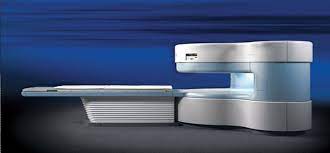
If you are looking for a diagnostic imaging in East Brunswick, NJ there are a few things you should consider before making your decision. Knowing what to look for can help you select a facility that will best meet your needs. In this blog post, we will discuss some tips on how to choose the right diagnostic imaging center in East Brunswick, NJ so you can get the most accurate results for your imaging needs.
What is diagnostic imaging?
Diagnostic imaging is a type of medical test used to diagnose and monitor conditions. It involves taking pictures of the inside of the body, such as the heart, organs, or tissues, to detect any abnormalities. Diagnostic imaging can be done using X-rays, ultrasounds, CT scans, MRI scans, and PET scans. These tests can help physicians identify and treat a variety of illnesses and diseases, including cancer, cardiovascular disease, and neurological conditions. Diagnostic imaging can also be used to help diagnose injuries, such as fractures or torn ligaments.
When do you need diagnostic imaging?
Diagnostic imaging is used to diagnose and monitor diseases or injuries. It is a tool for doctors to see what’s happening inside your body without the need for surgery. Your doctor might suggest diagnostic imaging if you are experiencing symptoms such as pain, weakness, fever, or vomiting. It is also used if there is an underlying medical condition that needs to be monitored. Diagnostic imaging can also be used to detect cancer, heart disease, and other medical conditions. If you experience any of these symptoms, it is important to contact your doctor right away to discuss whether or not diagnostic imaging is necessary.
What are the different types of diagnostic imaging?
Diagnostic imaging is the use of imaging technology to diagnose medical conditions. There are many types of diagnostic imaging available, each with its benefits and uses. Common types of imaging include X-rays, computed tomography (CT) scans, magnetic resonance imaging (MRI) scans, ultrasound, and nuclear medicine imaging. X-rays use radiation to produce images of bones and tissues in the body. CT scans produce detailed images of organs and other structures inside the body. MRI scans create a detailed view of internal organs, bones, soft tissues, and blood vessels. Ultrasound uses sound waves to create an image of the inside of the body. Nuclear medicine imaging utilizes small amounts of radioactive material to produce images that allow doctors to evaluate organs and detect disease.






